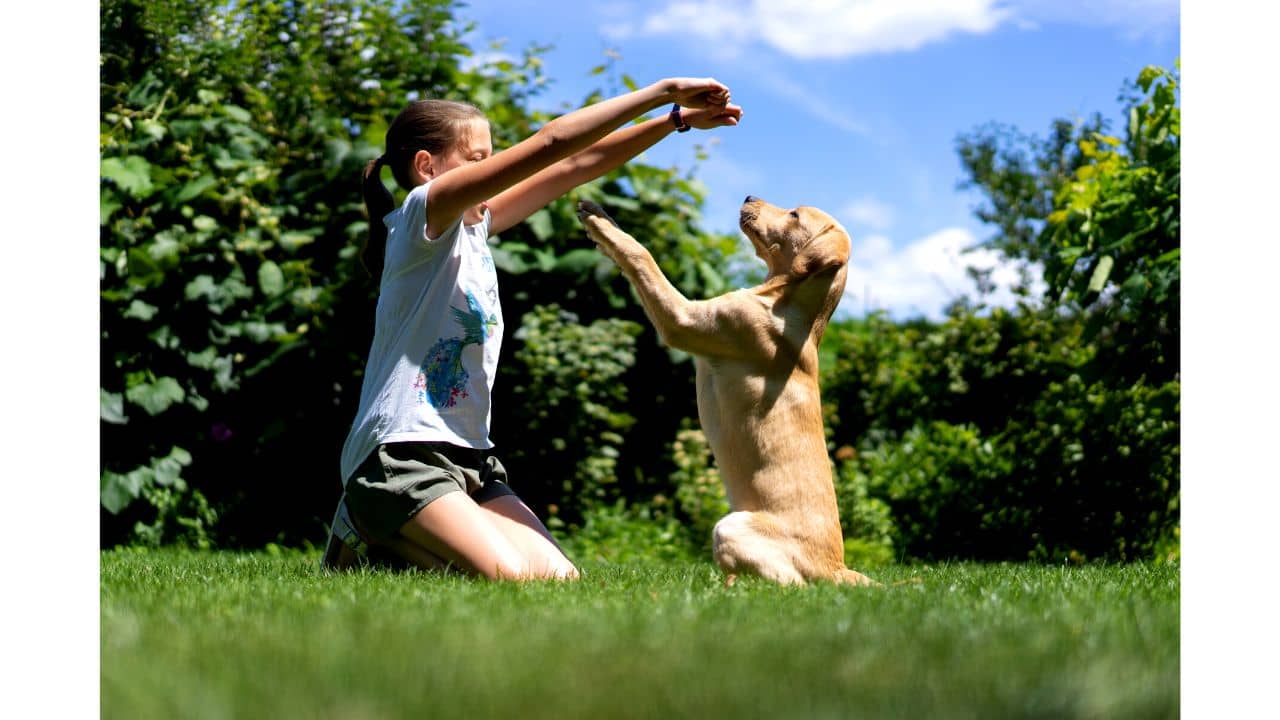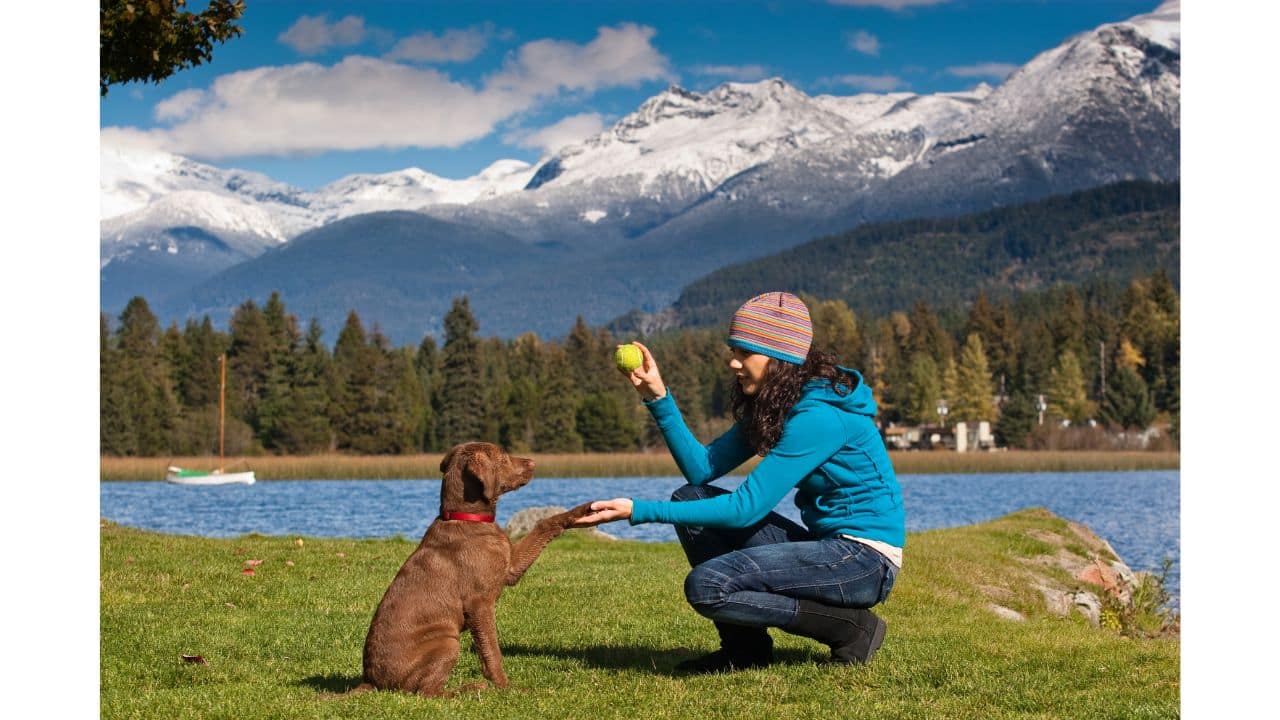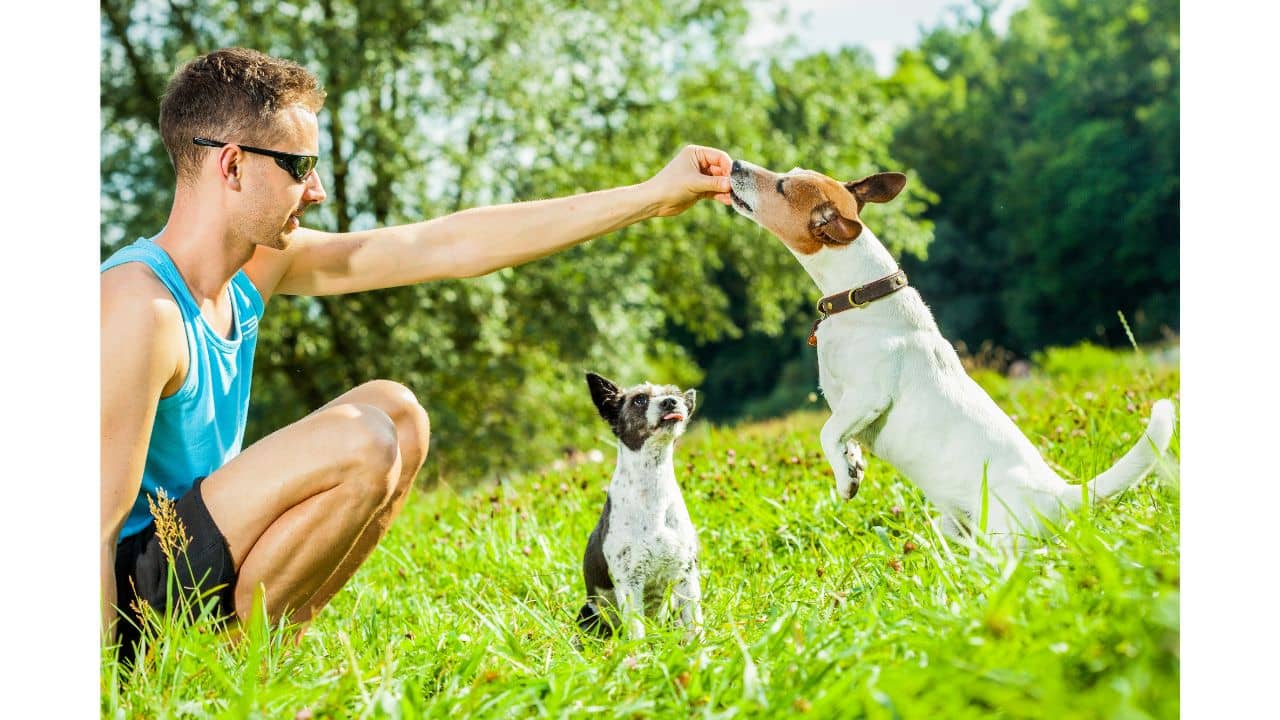Puppy Training Schedule by Week
Are you a new pet parent looking for the best way to train your puppy?
Training can be overwhelming and confusing, but with a customized week by week puppy training schedule, you can make it simpler.
With the right approach, you’ll have a well-mannered pup in no time!
You’ll find all the information you need below to create an effective plan that works for both of you.
So let’s get started!
Establish Your Training Goals
Ready to take your canine companion on the journey of a lifetime? Let’s get started by establishing your training goals!
A great way to do this is by using positive reinforcement techniques and creating a reward system for successful completion of tasks. By doing so, you’ll be able to show your pup that success is rewarded with treats, hugs, or even praise. This will help create strong associations between desired behaviors and rewards.
Once you’ve established your training goals, it’s important to stick to them and stay consistent throughout the process. This means that you should give out rewards each time your pup exhibits the desired behavior – no matter how small or seemingly insignificant the action may be.

Additionally, make sure that any corrections are done in a calm and collected manner without too much emotion. This can help ensure that negative emotions don’t impede on your pup’s progress.
To stay on track during puppy training, it’s best to develop a week-by-week schedule and checklist of what needs to be accomplished during each session. With regular practice and dedication from both you and your pup, these milestones can easily be achieved over time!
With patience and understanding, as well as an effective reward system in place, you can make sure each milestone earned is celebrated with joyous enthusiasm!
Choose the Right Training Method
When it comes to training, choosing the right method is key – take for example a small terrier that needs to learn ‘sit’: using positive reinforcement and reward-based training may work best in this situation.
Positive reinforcement is an effective way to train puppies as it rewards desired behavior, allowing them to make connections between their actions and being rewarded. For example, by giving your puppy a treat after they perform the desired behavior of ‘sitting’, you will be able to reinforce this action through reward-based training. As a result, your puppy will become more likely to do this again when asked in the future.

The most important thing about choosing the right method of training is finding something that works for both you and your pup. Your puppies should feel comfortable with whatever training style you choose and should respond well when given praise or rewards.
Additionally, it’s important to remember that consistency is key when teaching your puppy new behaviors; ensure that you use repetition so that they can fully understand what is expected from them each time. If done correctly, positive reinforcement will eventually lead your pup to follow commands without needing treats or other forms of reward as motivation every single time.
Training does not have to be boring or difficult; with patience and perseverance on both sides of the leash, you can create enjoyable learning experiences for both yourself and your furry friend! Make sure you are always praising good behavior along with providing occasional treats; if done properly, this combination can help make teaching new behaviors easier for everyone involved.
Create a Customized Schedule
To create a customized plan for your puppy schedule, start by breaking down the training into manageable chunks of time and activities. Positive reinforcement is key to success when it comes to puppy training – use a reward system that’ll encourage your pup to keep trying.

Have short sessions throughout the day, focusing on one task at a time. Keep each session fun and exciting for your pup so they look forward to the next one!
When creating your puppy’s schedule, consider their energy level and attention span. Make sure you’re not pushing them too hard or tiring them out before they reach their goal.
Also, be sure to include some playtime in their schedule – this helps build a bond between you two as well as giving them an opportunity for physical activity!
Organize each session around specific tasks like sit, stay, come, or leave it commands. When teaching these commands, remember to give verbal cues first, then add hand signals once they understand what you want from them.
Take things slowly; don’t rush your pup as this can lead to confusion and frustration which can negatively impact their learning process. Celebrate successes with positive feedback and treats – let them know when they get it right!
Implement the Training Schedule
Now that you’ve crafted your pup’s customized plan of study, it’s time to put it into action! So roll up your sleeves and get ready for some educational adventure – with a little patience and enthusiasm, you’ll have your pup schooling like an A-student in no time.
To make the most of the training schedule, keep these three things in mind:
- Positive reinforcement — Use treats, verbal praise, or other rewards when your puppy achieves a desired behavior.
- Reward system — Break down tasks into smaller achievable steps and reward each successful step.
- Consistency — Stay consistent with the same commands and body language when teaching new skills.
Implementing this training schedule can be both fun and rewarding for both you and your pup. It is important to remember that this process takes time; don’t expect miracles overnight!
Keep things lighthearted but firm as you guide them through their learning journey – patience is key here! Don’t forget to take breaks so that everyone involved can stay energized and motivated.
With consistency, positive reinforcement, and a good reward system in place – soon enough you’ll have a well-trained pup!
Are you looking to establish a structured routine for your new furry friend?
Check out our comprehensive Puppy Training Schedule, designed to help you navigate the early stages of your puppy’s development and create a strong foundation for their training.
Monitor Your Progress
Excitedly monitor your pup’s progress as they learn each new skill – you’ll be amazed at how quickly they can pick up the lessons! Record milestones, and reward success, to help encourage positive behaviors and reinforce what they’ve learned.
Keeping track of your pup’s successes is a great way to recognize their hard work and boost their confidence. You’ll also notice that as you consistently reward positive behaviors, your pup will become more eager to continue learning new skills.
When tracking your pup’s progress, make sure that you’re aware of any signs of frustration or distress during the training process. If needed, take a step back from the current lesson and allow them some time for play or relaxation before continuing forward with the training schedule. This will help keep them motivated and engaged in the material while avoiding burnout or exhaustion.
As you progress through each week of puppy training, remember to always remain patient with yourself and your pup. Every dog learns differently, so don’t be discouraged if it takes longer than expected for them to grasp certain concepts – simply adjust the schedule accordingly and keep pushing forward!
With dedication and consistency on your part, you’ll eventually reach those desired results together!
See also here The Ultimate Guide to Potty Training Your Dog, Discover the Benefits of Martingale Collars for Gentle and Effective Dog Training and Explore the Top Dog Training Books for Effective Pet Education.
Frequently Asked Questions
How do I know if I’m choosing the right training method for my puppy?
Are you wondering if you’re choosing the right training method for your puppy? You’re not alone! According to recent surveys, nearly half of all dog owners worry that they aren’t doing enough when it comes to their pup’s education.
To ensure success, focus on positive reinforcement and socialization skills. This will help your puppy become accustomed to new people and situations while learning important behaviors. Remember that patience is key – rewarding even small accomplishments can help solidify a trusting bond between you and your pup.
With time and commitment, you’ll be able to create an effective training schedule tailored specifically for your puppy’s needs!
What do I do if my puppy isn’t responding to the training schedule?
If your puppy isn’t responding to the training schedule you’ve established, don’t worry! It’s important to stay positive and remember that learning takes time.
Try using a reward system as a form of positive reinforcement for desired behaviors, and make sure you’re providing plenty of praise when your pup makes progress.
As long as you remain patient and consistent with your approach, your pup will soon be following the training schedule with ease!
Is there an age limit for when I should start training my puppy?
When it comes to training your puppy, there is no definitive age limit for when you should start. However, experts recommend starting as early as 8 weeks old so that you can establish positive reinforcement methods and avoid any fear-based techniques that could damage the bond between you and your pup.
Positive reinforcement will help build trust and create a strong relationship, while fear-based methods may cause anxiety or behavioral issues in the long run.
Are there any common mistakes to avoid during puppy training?
Are you looking to train your puppy but don’t know where to start?
One of the most common mistakes you can make is not eliminating distractions. When training, it’s important for your pup to focus on the task at hand and not get sidetracked by things like people walking by or other animals.
Additionally, be sure to use positive reinforcement when teaching them new commands. Praise them with verbal affirmations and treats when they do something right. This will help them understand what behavior is expected of them and encourage further progress.
How long does it take to train a puppy?
It can take anywhere from several months to a year or more to train a puppy, depending on the individual pup and how often you practice.
It’s important to use positive reinforcement during training and socialize your puppy early on so it is comfortable with other people and animals.
With consistency, patience, and lots of treats, you can teach your pup basic commands such as sit, come, and stay.
Also, make sure to reward your pup with praises or extra snuggles when they do something right!
Conclusion
It’s time to put your puppy training schedule to the test! With regular practice and reinforcement, you’ll soon be amazed at how far your pup has come.
There’s no better feeling than watching them learn and grow into a well-behaved companion. And don’t forget the reward – a pat on the head or a treat never fails to bring a smile to their face.
So take this journey with your furry friend, one step at a time, and it will be an adventure like no other; one that will bring you closer together than ever before.
Take the plunge – you won’t regret it!
